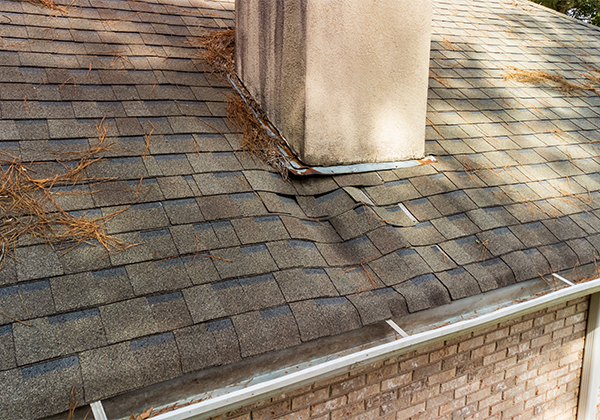Signs your roof might be leaking (and what to do about it)
June 24, 2025
Tap into your 5 senses to detect water seeping through your roof and act ASAP
By the time you notice signs of a leaky roof, there could already be severe structural damage to your property, making it essential to find and repair the source ASAP.
Think about it this way – there are five basic components to a roof, adding up to as many as nine protective layers. Unless freak weather event caused acute destruction, it’s likely that this seepage has been an ongoing problem for some time.
The symptoms may be subtle, and they aren’t always visible. That’s why it’s important to tap into your six senses – including property owner’s intuition – to detect signs your roof might be leaking and take immediate action to make the fix.

Smell
Sometimes you can smell a leak before you even see it.
The scent of rotting wood or a persistent musty odour could point to a leak feeding mould growth, either behind walls or within insulation. This especially true if the stench is coming from an attic, crawlspace, or a building’s upper floors in general.
The issue isn’t just the structural damage this could be causing. Mould and mildew are known cause health issues, like triggering eye, nose, or even respiratory health issues for people who live or work in the space.
Sight
The most obvious way to discover a leaky roof is seeing signs crop up inside the building, along the ceiling or upper walls. Keep an eye out for brown, rusty or other discoloured patches and cracked or peeling paint.
Likewise, a sagging ceiling indoors or over a porch could signal trapped moisture in the drywall, insulation, or even wood rot in the worst cases.
Check out your exteriors as well and remember – if you hear hooves think horses, and if you see shingles on the ground, think roof leaks. Missing and damaged shingles are another likely leak indicator, often the result of Canada’s infamous freeze-thaw cycles and blustering windstorms loosening or striping roof materials away entirely.
Touch
It goes without saying that raindrops should not be falling on your head when you’re indoors.
Feeling drips during or after a rainstorm, wet walls, or stepping in a puddle in your attic or upper floors are sure signs of a critical roof leak.
Taste
Ok, so you don’t actually need to use your sense of taste to catch a leaking roof, but you can use it to select new shingles that complement your building’s existing aesthetic!
Listen to the roofing pros
If you sense a leak in your roof, listen to the pros about how to locate the source and repair the problem to avoid further property damage. Delays can lead to extensive structural and interior damage and higher repair costs, so the sooner you can contact them, the better.
Look for certified roofing contractors familiar with applicable building codes and common climate-related challenges in your area, as this can impact how they fix the leak and any damage it might have caused.
Your next phone call should be to your insurance provider to see what is covered and if a claim is warranted - not all policies will inherently cover roof leaks, especially if they result from lack of maintenance or poor workmanship. Make sure to take photos of any affected areas as documentation for insurance claims and repair quotes.
A roof leak may start as just a trickle, but it can quickly lead to major structural issues and costly repairs. By tuning into the signs and taking prompt action, you’ll have a better chance of protecting your home, health and investment.